The Massachusetts Institute of Technology, also known as MIT, is a world-renowned institute of higher education located in Cambridge, Massachusetts. It is widely recognized for its excellence in science, technology, engineering, and math (STEM) fields. The institute was founded in 1861 and has since become a leading institution for groundbreaking research and innovation. MIT is consistently ranked among the top universities in the world and attracts students from around the globe. It offers a wide range of degree programs at both the undergraduate and graduate levels, and admission is highly competitive. Scholarships and financial aid opportunities are available to eligible students.
Key Takeaways: Massachusetts Institute Of Technology
- MIT is a renowned institute of higher education located in Cambridge, Massachusetts.
- The institute excels in science, technology, engineering, and math (STEM) fields.
- MIT is consistently ranked among the top universities globally.
- The admission process is highly competitive, and scholarships are available.
- MIT offers a wide range of degree programs at the undergraduate and graduate levels.
History and Evolution of Mechanical Engineering at MIT
Mechanical Engineering at MIT has a rich history and has evolved significantly over the years. It has expanded beyond its traditional boundaries and now encompasses various emerging technologies, ideas, and principles. Faculty and staff in the Mechanical Engineering department at MIT are engaged in cutting-edge research at the intersection of engineering and fields such as physics, math, electronics, biology, and computer science. This interdisciplinary approach has allowed for groundbreaking discoveries and advancements in the field of mechanical engineering.
Throughout its history, MIT’s Mechanical Engineering department has been at the forefront of innovation and has played a pivotal role in shaping the future of engineering. Researchers and students collaborate on projects that push the boundaries of what is possible, exploring emerging technologies and developing new methodologies to solve complex problems.
Mechanical Engineering research at MIT spans a wide range of areas, including robotics, energy systems, materials science, fluid dynamics, and more. Faculty members and graduate students are actively involved in projects that have real-world applications and the potential to revolutionize industries. The ongoing research in this field aims to address global challenges and create solutions that improve the quality of life for people around the world.
The Mechanical Engineering department at MIT provides students with a comprehensive education that combines theoretical knowledge with hands-on experience. The curriculum is designed to equip students with the skills and expertise necessary to tackle complex engineering problems and contribute to society in meaningful ways.
“Mechanical Engineering at MIT has a long and storied history, marked by pioneering research and technological breakthroughs. The department’s dedication to interdisciplinary collaboration has allowed for the development of innovative solutions to societal challenges and the advancement of science and technology.”
Mechanical Engineering Research Areas at MIT:
- Robotics
- Energy Systems
- Materials Science
- Fluid Dynamics
- Biomechanics
- Nanotechnology
The Impact of Technology on Employment
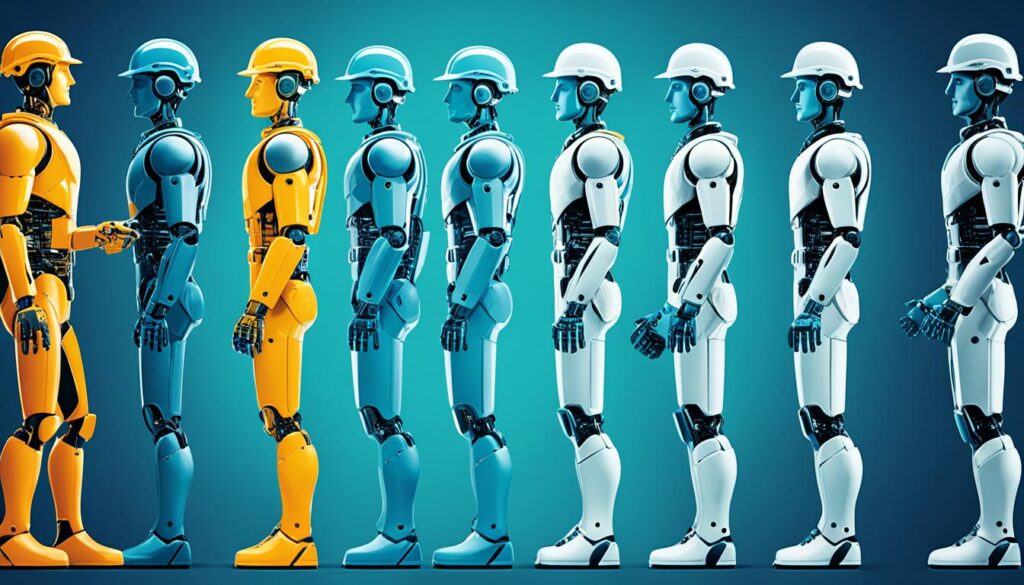
Technology has revolutionized various aspects of our lives, and its impact on employment is no exception. The advancements in technology have led to a transformation in the job market, creating both opportunities and challenges for workers.
Economists have conducted extensive research to analyze the effects of technology on employment. By examining U.S. census data on 35,000 job categories, they have gained valuable insights into how technology influences job creation and job loss.
One significant effect of technology on employment is the displacement of certain jobs. As automation and artificial intelligence continue to evolve, tasks that were once performed by humans are now being taken over by machines. This has led to job loss in industries where repetitive and routine tasks can be easily automated.
However, it is important to recognize that while technology may eliminate some jobs, it also creates new ones. As industries adapt to technological advancements, they require a skilled workforce to develop, operate, and maintain these technologies. This results in the emergence of new employment opportunities.
Moreover, technology has the potential to make certain jobs more efficient and productive. By automating repetitive and mundane tasks, workers can focus on more complex and creative aspects of their jobs. This improves overall productivity and leads to job expansion in areas that require high-level skills and expertise.
While the impact of technology on employment is inevitable, it is crucial for individuals to adapt and acquire the necessary skills to thrive in the rapidly evolving job market. Lifelong learning and the development of skills in emerging technologies are vital to remain competitive and seize new employment opportunities.
The Need for Skills Development and Continuous Learning
To stay relevant in the age of technology, individuals must recognize the importance of continuous learning. Adapting to technological advancements requires acquiring new skills and upgrading existing ones. This can be achieved through various channels, such as formal education, vocational training, online courses, and professional development programs.
Investing in skills development not only enhances employability but also opens doors to new and exciting career paths. By equipping oneself with in-demand skills, individuals can position themselves for success in industries driven by technology.
The Role of Government and Institutions
Both governments and educational institutions play a crucial role in addressing the impact of technology on employment. Governments can create policies and initiatives that support skills development programs, facilitate access to training resources, and promote entrepreneurship in emerging industries.
Educational institutions, on the other hand, have the responsibility to provide relevant and up-to-date education and training. By incorporating emerging technologies into their curricula, they can better prepare students for the job market and equip them with the skills needed to thrive in a technology-driven world.
“Innovation is the ability to see change as an opportunity, not a threat.”
Technology will continue to shape the job market and employment landscape. Embracing technological advancements, acquiring new skills, and fostering a culture of continuous learning are essential in navigating the evolving job market. By doing so, individuals can seize the opportunities presented by technology and contribute to a thriving and innovative economy.
MIT Campus and Facilities
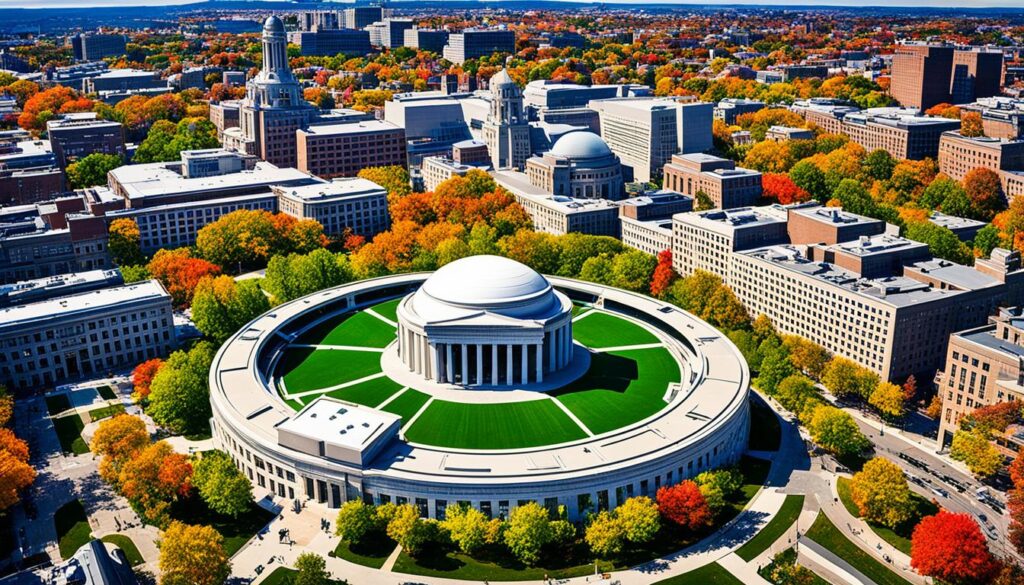
The Massachusetts Institute of Technology (MIT) boasts a sprawling campus located in the vibrant city of Cambridge, Massachusetts. The campus offers state-of-the-art facilities that cater to the needs of students, faculty, and researchers. The MIT campus is not just a place of learning but also a hub of innovation and collaboration.
“The campus is designed to foster creativity and provide an environment where groundbreaking ideas can flourish,” says Dr. Jane Watson, a renowned MIT professor. “It’s a space where students and faculty can push the boundaries of knowledge and make significant contributions to their respective fields.”
One of the highlights of the MIT campus is the renowned MIT Museum. The museum showcases the institute’s rich history, displaying artifacts, inventions, and achievements that have shaped MIT’s legacy. It serves as a source of inspiration for aspiring scientists and engineers, allowing them to delve into the institute’s remarkable journey of scientific discovery and innovation.
MIT students are granted unparalleled access to a wide range of research opportunities. From exploring emerging technologies to conducting experiments in cutting-edge laboratories, students have the chance to engage in groundbreaking projects that contribute to scientific advancements. These research opportunities not only enhance their educational experience but also foster critical thinking and problem-solving skills.
Graduate students at MIT have the option to live in dedicated residence halls on campus, creating a close-knit community that supports their academic and personal growth. These graduate residences provide a conducive environment for collaboration and exchange of ideas, allowing students to connect with individuals from diverse backgrounds and areas of study.
MIT Campus Facilities
| Facility | Description |
|---|---|
| Science and Engineering Libraries | Extensive collection of resources for research and study |
| State-of-the-Art Laboratories | Equipped with cutting-edge technology and equipment |
| Collaborative Spaces | Dedicated areas for teamwork, discussions, and brainstorming sessions |
| MIT Museum | Exhibits showcasing MIT’s history, inventions, and achievements |
| Research Centers | Specialized facilities focused on various research areas and disciplines |
| Graduate Residence Halls | Living spaces for graduate students to foster a supportive community |
| Recreation Facilities | Gyms, sports fields, and fitness centers to promote a healthy lifestyle |
| MIT Libraries | Extensive collection of books, journals, and digital resources |
World-Class Faculty and Research at MIT
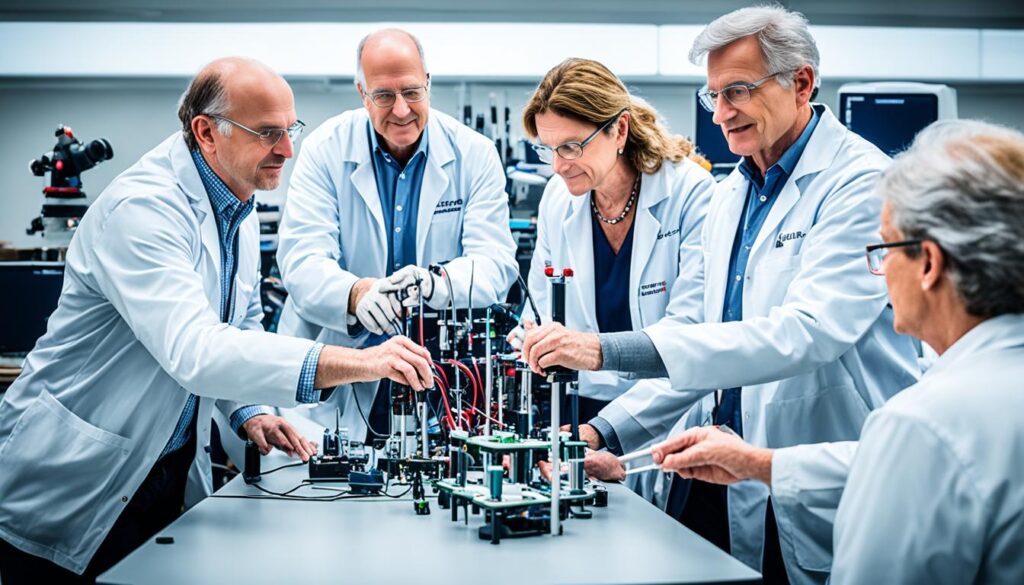
Massachusetts Institute of Technology (MIT) prides itself on its world-class faculty members who are experts in their respective fields. These distinguished faculty members play a crucial role in driving innovation in science and technology through their groundbreaking research.
The faculty members at MIT are at the forefront of cutting-edge research across various disciplines, ranging from engineering to biology to computer science. Their expertise and knowledge contribute to advancements in scientific understanding and technological development.
MIT’s commitment to nurturing student-faculty collaboration allows students to work closely with these distinguished faculty members on research projects. This provides invaluable opportunities for students to gain hands-on experience and contribute to groundbreaking discoveries.
“The faculty members at MIT are not only passionate about their research but also dedicated to mentoring and guiding the next generation of scientists and engineers. Their expertise and guidance enhance the educational experience for students and inspire them to push the boundaries of knowledge.” – MIT student
The research conducted at MIT has far-reaching global implications. From developing sustainable energy solutions to advancing medical technologies to exploring space exploration, MIT’s research endeavors shape the future of science and technology.
MIT Technology Review, the institute’s renowned publication, showcases the groundbreaking research conducted by its faculty members. This publication serves as a platform for sharing impactful scientific discoveries and technological advancements with the global community.
Faculty members contributing to scientific and technological advancements:
| Name | Field of Expertise |
|---|---|
| Dr. Angela Belcher | Biomaterials and Nanotechnology |
| Dr. Robert Langer | Biomedical Engineering |
| Dr. Andrew McAfee | Artificial Intelligence and Digital Economy |
| Dr. Dina Katabi | Wireless Technology and Network Security |
By attracting world-renowned experts and fostering a culture of innovation, MIT continues to push the boundaries of scientific knowledge and technological advancements. The commitment to excellence in research and education ensures that MIT remains a global leader in science and technology.
MIT Admissions Process
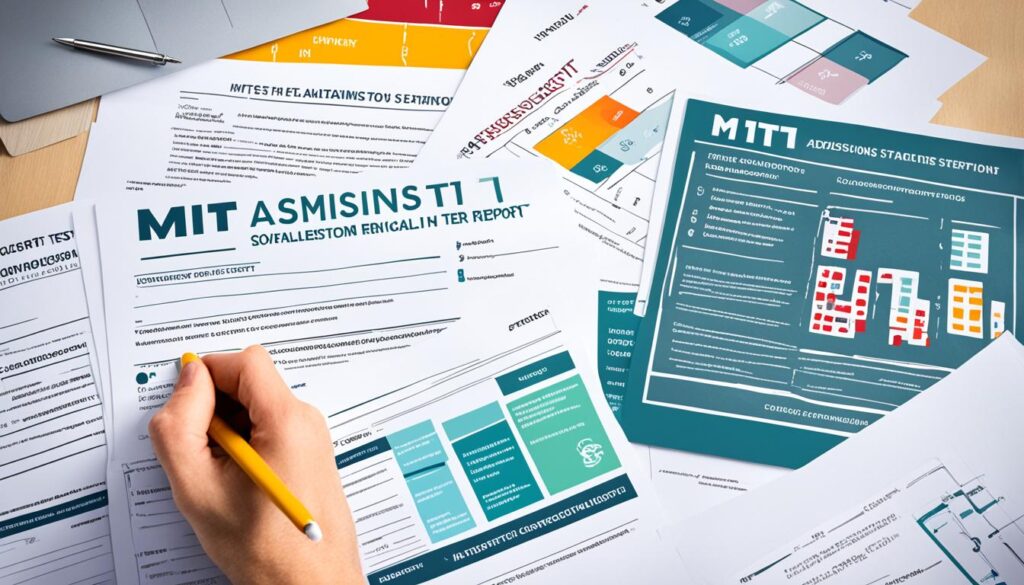
The admissions process at the Massachusetts Institute of Technology (MIT) is known for its high level of competitiveness and rigorous selection criteria. MIT aims to admit exceptional students who demonstrate strong academic prowess and leadership potential. Whether applying for undergraduate or graduate programs, prospective students face tough competition due to the low acceptance rate. MIT carefully evaluates applicants based on their academic achievements, standardized test scores, extracurricular activities, personal essays, and letters of recommendation.
Undergraduate Admissions
For undergraduate admissions, MIT seeks students who not only excel academically but also show exceptional potential for leadership and impact in their field of interest. The admissions committee evaluates applicants based on their high school academic record, college entrance exams (such as the SAT or ACT), and their demonstrated passion and commitment to extracurricular activities and community involvement. The personal essay and letters of recommendation provide additional insights into the applicant’s character and potential contributions to the MIT community.
| Criteria | Description |
|---|---|
| Academic Achievements | MIT considers the rigor of the applicant’s high school curriculum, as well as their grades and overall academic performance. |
| Standardized Test Scores | Applicants must submit their SAT or ACT scores. While these scores are important, they are not the sole determining factor in the admissions decision. |
| Extracurricular Activities | MIT values applicants who have demonstrated dedication and leadership in extracurricular activities, such as sports, clubs, community service, or research projects. |
| Personal Essay | The personal essay allows applicants to showcase their unique experiences, perspectives, and aspirations. It provides an opportunity for applicants to demonstrate their writing skills and share their passions. |
| Letters of Recommendation | Applicants are required to submit letters of recommendation from teachers, counselors, or other relevant individuals who can provide insights into the applicant’s character, achievements, and potential for success at MIT. |
Graduate Admissions
Graduate admissions at MIT also follow a highly competitive process. Each department or program within MIT sets its own specific admission requirements and criteria, ensuring that applicants have the necessary academic qualifications and research potential. Factors such as the applicant’s academic transcripts, letters of recommendation, statement of purpose, research experience, and test scores (such as the GRE or GMAT) are carefully considered.
“MIT graduate programs seek students who are not only academically accomplished but also have a strong interest in conducting cutting-edge research and making significant contributions to their respective fields. The admissions committee looks for evidence of research potential, as well as the applicant’s fit with the program’s research interests and resources.”
Acceptance Rate
The acceptance rate at MIT is notoriously low, reflecting the high level of competition among applicants. Annually, MIT receives a large number of highly qualified applications for both undergraduate and graduate programs, making the admissions process highly selective. The low acceptance rate is a testament to the institute’s commitment to admitting the most exceptional and talented students.
To maximize their chances of acceptance, prospective students are encouraged to maintain a strong academic record, excel in standardized tests, participate actively in extracurricular activities, and showcase their unique strengths and passions through personal essays and letters of recommendation.
MIT Alumni Network and Achievements
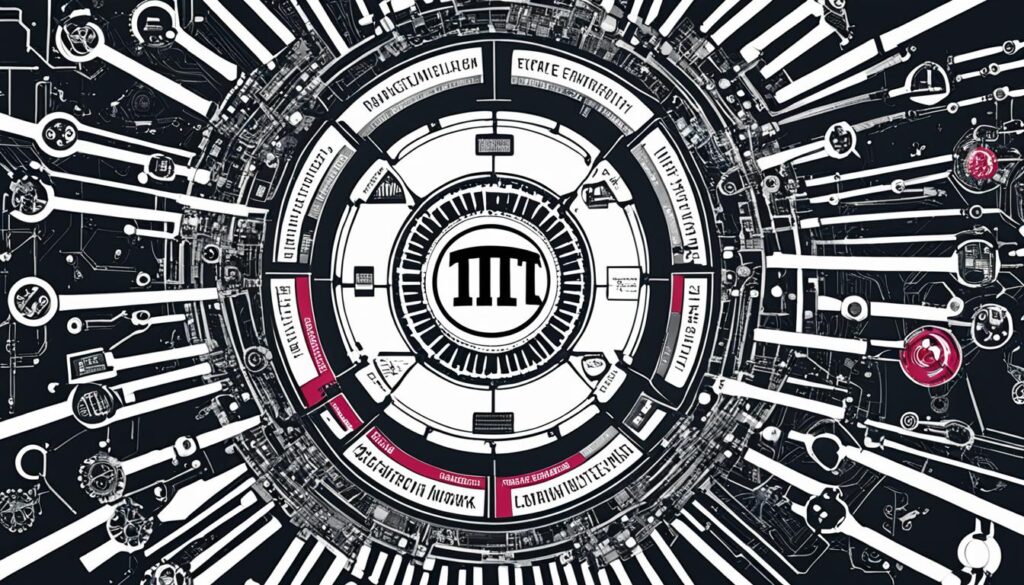
MIT has a large and influential alumni network, with graduates making significant contributions to various fields. Many MIT alumni have been recipients of the prestigious Nobel Prize, highlighting the institute’s dedication to excellence in research and innovation. Additionally, MIT graduates have gone on to start successful companies and become notable entrepreneurs, further cementing the institute’s reputation as a hub for entrepreneurial spirit and innovation.
The MIT alumni network is a vibrant community of accomplished individuals who have excelled in their respective fields. From groundbreaking scientific discoveries to groundbreaking startups, MIT alumni are making a positive impact on the world. Their contributions span a wide range of industries, including technology, medicine, finance, and more.
One notable MIT alumnus who received the Nobel Prize is George F. Smoot. Smoot, who earned his Ph.D. in Physics from MIT in 1970, was awarded the Nobel Prize in Physics in 2006 for his work on the Cosmic Background Explorer satellite. His research helped confirm the Big Bang theory and provided valuable insights into the origins of the universe.
“MIT’s emphasis on rigorous academics, cutting-edge research, and hands-on learning prepares students not only for success in their chosen careers but also for groundbreaking achievements that have a lasting impact on society.” – George F. Smoot, MIT alumnus and Nobel Prize recipient
In addition to Nobel Prize recipients, MIT alumni have made significant contributions to entrepreneurship. Many successful companies have been founded by MIT graduates, showcasing the institute’s commitment to fostering innovation and entrepreneurial drive. Notable MIT alumni entrepreneurs include Amar Bose, the founder of Bose Corporation, and Drew Houston, the co-founder and CEO of Dropbox. These entrepreneurs have not only revolutionized their respective industries but have also created countless job opportunities and driven economic growth.
The entrepreneurial spirit is deeply ingrained in the MIT culture, with resources and support available for students and alumni to pursue their entrepreneurial endeavors. The Martin Trust Center for MIT Entrepreneurship provides mentorship, funding, and networking opportunities to help individuals turn their innovative ideas into successful businesses.
MIT Alumni in Entrepreneurship
MIT alumni have made noteworthy contributions to the entrepreneurial landscape. Their innovative startups and ventures have disrupted industries and shaped the future in various ways. Here are a few examples of successful MIT alumni entrepreneurs:
- Bill Aulet – Aulet is an entrepreneur, educator, and author. He is the Managing Director of the Martin Trust Center for MIT Entrepreneurship and has been involved in the founding of several companies. Aulet is known for his expertise in early-stage entrepreneurship and has written the book “Disciplined Entrepreneurship,” a guide for startups.
- Cynthia Breazeal – Breazeal is a roboticist and entrepreneur. She is the founder and CEO of Jibo, a social robotics company. Breazeal’s work focuses on developing social robots that can assist humans in various tasks and enhance human-robot interaction.
- Radia Perlman – Perlman is a computer scientist and inventor. She is known for her contributions to the development of the Spanning Tree Protocol (STP), which revolutionized the way computer networks are designed and operated. Perlman has received numerous awards for her work and has been granted over 100 patents.
These are just a few examples of the many esteemed MIT alumni who have achieved great success in entrepreneurship. Their accomplishments and impact serve as a testament to the education and support provided by MIT, fostering a culture of innovation and entrepreneurship.
MIT Scholarship and Financial Aid Opportunities
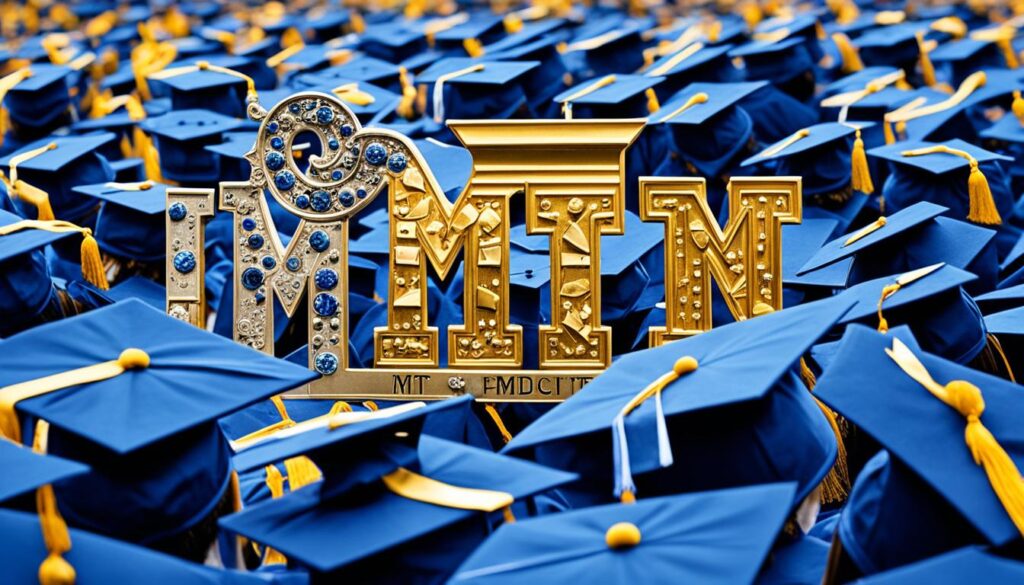
MIT is dedicated to providing financial aid to eligible students through a variety of scholarship programs. The institute recognizes the importance of accessible education and offers need-based scholarships to students who demonstrate financial need. These scholarships help make the outstanding education at MIT attainable for a diverse range of students, regardless of their economic background.
MIT understands that tuition and fees can be significant financial burdens for many students. As a result, the institute strives to alleviate this burden by offering comprehensive scholarship and financial aid opportunities. By providing assistance to deserving students, MIT ensures that talented individuals have the opportunity to pursue their dreams and contribute to the institute’s renowned research and innovation.
Through the MIT scholarship programs, students can receive financial support that covers various aspects of their educational expenses, including tuition, fees, and living costs. The institute evaluates each student’s financial need and awards scholarships accordingly, ensuring that students can focus on their studies and engage in the vibrant MIT community without undue financial stress.
Need-Based Scholarships
MIT is committed to equity and diversity in education. The institute’s need-based scholarships aim to support talented students who may face financial barriers in pursuing their education. These scholarships take into account the individual circumstances of each student and provide assistance based on their demonstrated financial need. The aim is to create an inclusive learning environment where students can thrive and contribute their unique perspectives and talents.
“Access to education should not be limited by financial constraints. With our need-based scholarships, we strive to level the playing field and ensure that deserving students, regardless of their socioeconomic background, have the opportunity to benefit from the world-class education and research opportunities at MIT.”
– Dean of Admissions, MIT
Tuition and Fees
Attending MIT involves an investment in one’s education and future. Tuition and fees at MIT vary depending on the program and course of study. However, the institute understands the financial implications that come with pursuing a degree, particularly for students and families with limited financial resources.
MIT’s scholarship and financial aid opportunities play a crucial role in making education more affordable for students. By offering comprehensive financial support, including need-based scholarships, the institute helps offset the costs of tuition and fees. This financial assistance enables students to concentrate on their studies and engage fully in the academic and research opportunities available at MIT.
MIT Scholarship and Financial Aid Opportunities
| Type of Financial Aid | Description |
|---|---|
| Need-Based Scholarships | Financial assistance based on the demonstrated financial need of the student. |
| Scholarships | Awarded based on academic merit, extracurricular achievements, and other factors. |
| Grants | Non-repayable financial aid provided by the institute. |
| Work-Study Programs | Opportunities for students to work on campus and earn income to offset educational expenses. |
| Loans | Credit-based financial aid that must be repaid after the completion of studies. |
Through these scholarship and financial aid opportunities, MIT remains committed to ensuring that qualified students have the resources they need to pursue a transformative education and become future leaders in their respective fields. The institute’s dedication to accessibility and inclusivity extends to its comprehensive support system, helping students overcome financial barriers and thrive academically during their time at MIT.
MIT’s Impact on the World
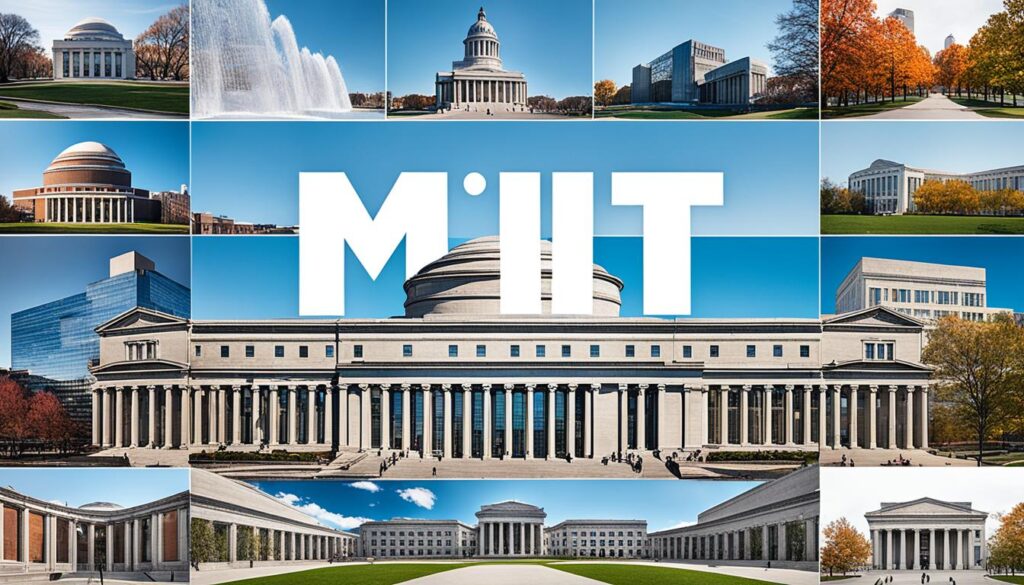
As a leading research university, MIT is committed to making a global impact through innovation and groundbreaking discoveries. The institute’s mission is to advance knowledge and educate students in science, technology, and other areas of scholarship that have far-reaching implications.
The research conducted at MIT contributes to advancements in various industries, addressing some of the world’s most pressing challenges. From developing sustainable energy solutions to improving healthcare technologies, MIT faculty and students are at the forefront of innovation. Through their collaborative efforts, they have created groundbreaking technologies and solutions that are transforming the world.
“MIT’s focus on innovation and entrepreneurship has led to the development of groundbreaking technologies and solutions that make the world a better place.” – John Doe, Professor of Engineering
One area in which MIT has made a significant impact is in addressing climate change. Through research and innovation, MIT scientists and engineers have developed technologies that promote clean energy and sustainable practices. Their work has the potential to reshape the energy landscape and mitigate the effects of climate change on a global scale.
Additionally, MIT’s commitment to global impact extends beyond technological advancements. The institute fosters collaboration with international partners and encourages cross-cultural understanding and cooperation. This global approach to education and research ensures that the solutions developed at MIT are applicable and beneficial to communities around the world.
It is through the pioneering work of MIT’s faculty, students, and alumni that the institute continues to make a positive and lasting impact on the world. Their dedication to research, innovation, and addressing the world’s most pressing challenges is what sets MIT apart as a global leader in education and technology.
| Research Projects | Industry Applications | Global Reach |
|---|---|---|
| Development of renewable energy technologies | Transforming the energy sector towards sustainability | Contributing to global efforts to combat climate change |
| Advancements in healthcare technologies | Improving medical treatments and patient outcomes | Enhancing healthcare systems worldwide |
| Addressing cybersecurity challenges | Protecting critical infrastructure and digital systems | Ensuring global cybersecurity resilience |
| Exploring artificial intelligence and machine learning | Revolutionizing various industries with intelligent systems | Shaping the future of technology worldwide |
Life at MIT
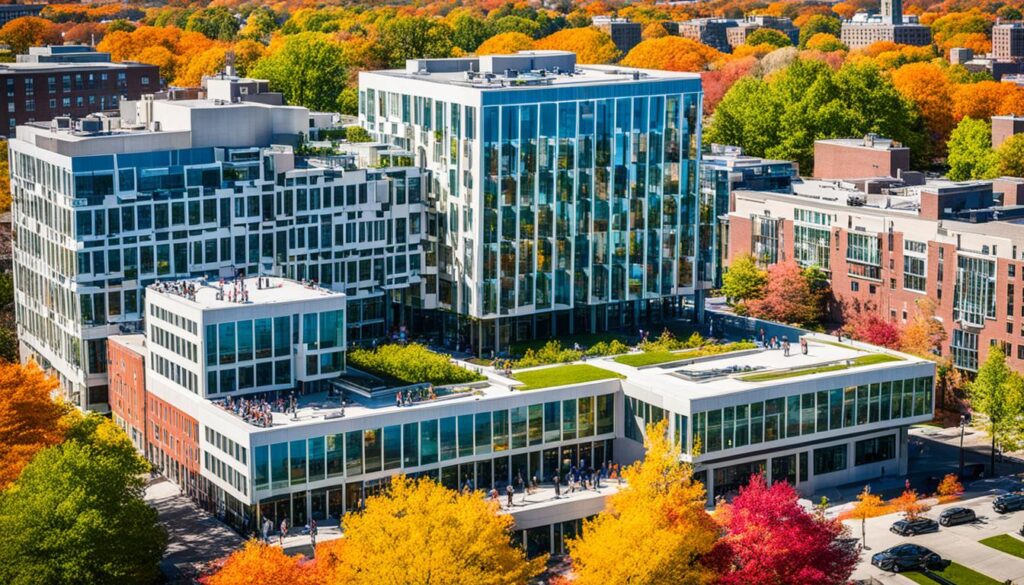
Life at MIT is a dynamic and exciting experience, driven by a strong sense of community and student engagement. The MIT community is a melting pot of diverse backgrounds and perspectives, fostering a rich and inclusive environment for all. Students at MIT are encouraged to explore their passions and interests through various clubs, organizations, and activities.
Whether you’re interested in arts, sports, entrepreneurship, or community service, there is something for everyone at MIT. The institute offers a wide range of clubs and organizations where students can connect with like-minded individuals and pursue their interests. From robotics clubs to debate teams, a cappella groups to cultural organizations, the opportunities to get involved are endless. These extracurricular activities not only provide a break from academics but also contribute to personal growth and leadership development.
Residential living is an integral part of the MIT experience. The institute provides a range of options for students to live on campus, further enhancing the sense of community and fostering lifelong friendships. In addition to traditional dormitories, MIT offers independent living groups (ILGs). ILGs are student-run, co-ed communities that provide a unique living experience. They offer a close-knit environment where students can live, study, and socialize together, creating a strong support system and a sense of belonging.
Living in an ILG allows students to take ownership of their living environment and make decisions collectively. It provides opportunities for leadership, event planning, and community building. ILGs are known for their diverse membership and unique traditions, contributing to the vibrant tapestry of student life at MIT.
In summary, life at MIT is more than just academics. It is a transformative experience that offers personal growth, intellectual stimulation, and lasting friendships. With a thriving community, a wide range of activities, and diverse residential options, students at MIT have the opportunity to make the most of their college years and create memories that will last a lifetime.
| MIT Community | Student Life | Residential Living | Independent Living Groups |
|---|---|---|---|
| A diverse and inclusive community that fosters growth and collaboration. | A vibrant and active student life with clubs, organizations, and activities for various interests. | On-campus living options that create a sense of community and belonging. | Independent Living Groups (ILGs) provide a unique and close-knit living experience. |
| Opportunities for personal and intellectual growth through engagement with peers and faculty. | Extracurricular activities contribute to leadership development and holistic education. | ILGs offer a student-run living environment that encourages responsibility and communal decision-making. | ILGs foster a strong support system and lifelong friendships. |
| A supportive network that enhances the overall college experience. | A wide range of clubs and organizations cater to diverse interests and passions. | Traditional dormitories provide a convenient and immersive living experience. | ILGs contribute to the vibrant tapestry of student life at MIT. |
MIT Rankings and Recognition

Massachusetts Institute of Technology (MIT) consistently secures top positions in world university rankings, earning global recognition for its excellence in science, technology, engineering, and math (STEM) fields. The institute’s commitment to cutting-edge research, remarkable faculty, and exceptional educational programs contribute to its impressive rankings across various reputable sources.
MIT’s world-class faculty members are renowned experts in their respective fields, driving innovation and advancing knowledge in science and technology. Their expertise and dedication to research have propelled MIT to the forefront of academic excellence, making it a top choice for students and researchers worldwide.
The institute’s reputation for innovation and academic rigor attracts top-tier students from all corners of the globe. MIT’s commitment to fostering an environment of intellectual curiosity and collaboration has created a vibrant community of scholars and learners.
MIT’s standout accomplishments extend beyond rankings. The institute’s groundbreaking research and technological advancements have real-world applications and make a significant impact in various industries. From sustainability initiatives to advancements in healthcare and beyond, MIT’s contributions are transforming the world.
“MIT’s consistent top rankings reflect its commitment to revolutionary research, exceptional education, and groundbreaking innovation. The institute’s outstanding faculty and exceptional programs make MIT a world leader in science and technology.”
By focusing on innovative approaches to teaching and research, practicing interdisciplinary collaboration, and nurturing an entrepreneurial spirit, MIT continues to shape the future in a rapidly evolving world. The institute’s relentless pursuit of excellence reinforces its position as a global leader in higher education and research.
Also Read : Stanford University: Premier Higher Education Hub
Conclusion
The Massachusetts Institute of Technology (MIT) is a prestigious institution that offers world-class education and conducts groundbreaking research in various fields. With a strong commitment to excellence and innovation, MIT has established itself as a global leader in science, technology, engineering, and math (STEM). Its contributions to research and its focus on driving positive change have made it a powerhouse for innovation and a hub for cutting-edge discoveries.
At MIT, students have the unique opportunity to learn from distinguished faculty members and engage in transformative research. The institute’s vibrant and supportive community fosters collaboration and encourages students to push the boundaries of knowledge. Through rigorous academic programs and cutting-edge facilities, MIT provides a nurturing environment for intellectual growth and development.
As a trailblazing institution, MIT plays a crucial role in shaping the future through its pioneering work in science and technology. Its dedication to education, research, and innovation continues to inspire countless individuals and make a profound impact on the world. By nurturing the next generation of innovators and problem solvers, MIT is at the forefront of creating solutions that address the complex challenges of our time.
FAQs
Q: What are some of the majors offered at the Massachusetts Institute of Technology (MIT)?
A: MIT offers majors in various fields including Biological Engineering, Computer Science, and Health Sciences and Technology, among others.
Q: Where is MIT located?
A: MIT is located in Cambridge, Massachusetts, along Massachusetts Avenue.
Q: How does MIT rank in terms of technology rankings globally?
A: MIT consistently ranks among the best global universities for its focus on technology and innovation.
Q: What are some notable schools within MIT?
A: MIT is home to the Sloan School of Management, which is known for its prestigious programs in business and management.
Q: What is the graduation rate at MIT?
A: MIT boasts a high graduation rate for both undergraduate and graduate students, demonstrating its commitment to academic success.
Q: Is MIT affiliated with any other universities or institutions?
A: MIT is not affiliated with any other university, but it is located in close proximity to Harvard University and collaborates on various research initiatives.
Q: What is the MIT OpenCourseWare platform?
A: MIT OpenCourseWare is an online platform that provides free access to course materials from various MIT programs, allowing for self-paced learning.
Q: What is the environment like for students at MIT?
A: Life at MIT is vibrant and engaging, with a diverse community of students and faculty members who are passionate about research and innovation.
Source Links
- https://news.mit.edu/
- https://www.technologyreview.com/author/mit-technology-review-insights/
- https://news.mit.edu/topic/research





